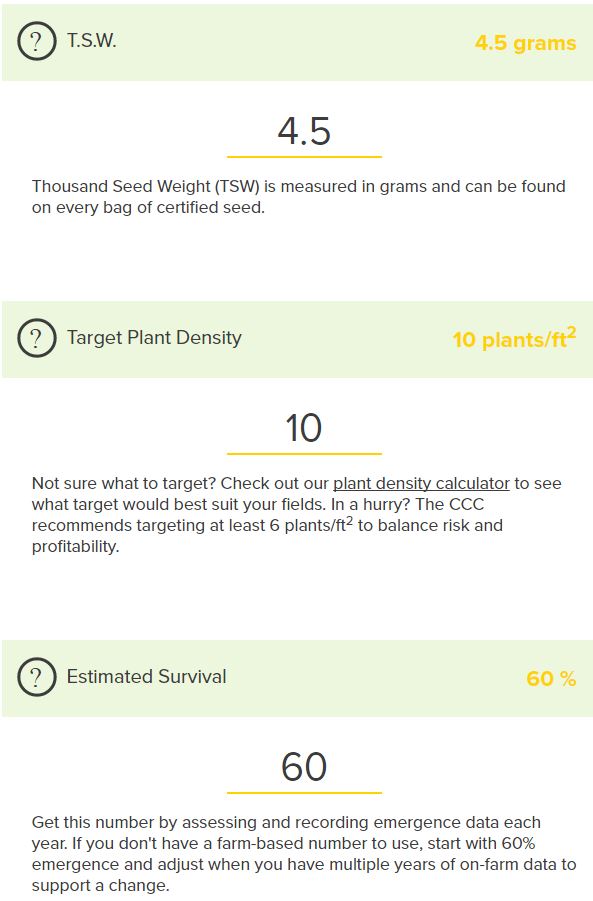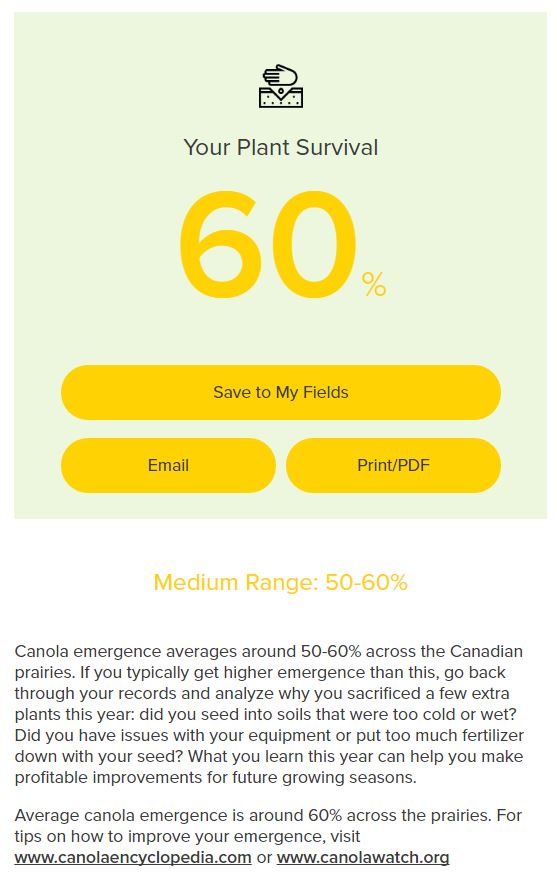It’s getting close to spring again and, of course, this article is all about calculating seeding rates and achieving a targeted plant density. Let’s cut to the chase. Other than situations where a pneumatic row planter is being used, why should farmers worry about seeding rates outside of the standard 5 lb per acre?
It’s true that with median seed sizes, average planting conditions and typical seed survival rates, 5 lb/ac should result in good stands and yields. But you might want to run through the calculations to be sure you are starting the season off right. There are some points to consider, the first of which is that thousand seed weight (TSW) can range from 3 to 6 grams per thousand. This can have a big impact on the number of seeds planted per square foot at a static 5 lb/ac seeding rate. Also, drills should be re-calibrated when switching between seed sizes. Another consideration is that with canola, 1 seed through the drill does not equal 1 plant. In Ontario we expect to get 75% emergence in typical conditions, and often get less. In Western Canada, they typically see 50-60% of seeds emerge.
Calculate what the plant stand will look like with your seed size and seeding rate, along with a 75% and 60% emergence rate. With a TSW of 4.5 g and a 5 lb/ac seeding rate the drill will put down 11.5 seeds/ft2 ([5 lb/ac x 10.4 conversion factor] ÷ 4.5 g = 11.5). If 75% of those seeds emerge you will have around 8.5 plants/ft2, but 60% emergence leaves you with just under 7 plants/ft2. As seed size goes up or seeding rate goes down, there will be fewer plants contributing to yield potential. Emergence may be poor with higher levels of residue, cold soils, or inconsistent planting depth.
The Canola Council of Canada (CCC) states that an ideal stand is 7-10 plants/ft2 and stands below 5 plants/ ft2 will have a lower yield potential. Seeding rates need to account for low emergence rates as well as buffering plant losses to insects or other in-season stressors. Marieke Patton, Bayer Territory Sales Manager in Central and Northern Ontario, shared that Bayer’s team of agronomists have been involved in a Target Plant Population project in which InVigor hybrids were evaluated at 42 locations over 3 years. Bayer found that targeting populations of 5-7 plants/ ft2 ensures yield potential is met, but Patton also noted that this means using seeding rates that deliver 10-11 seeds / ft2. Patton advises growers to “calculate the seeds per square foot required to meet yield potential, and calibrate your equipment properly to allow you to reach your target seeding rate and population.”
None of this is new, it’s just a reminder. What is new, is a tool from CCC to make this process a bit easier. Take a minute to run your seeding rate plans through the Seeding Rate Calculator at www.canolacalculator.ca . You can also use the Plant Survival tool to easily determine what your emergence was for future reference. Around the POST herbicide application timing or after harvest, conduct a plant density count and plug the values in along with your seed size and seeding rate to determine what the emergence rate was. Knowing the emergence rate will help you with seeding decisions in the future, and understanding the conditions that lead to problematic emergence rates. Combined with the drill calibration resources from CCC (Click Here), Ontario canola growers can make short work of delivering the right seeding rate in 2017.
Examples, www.canolacalculator.ca:
Seeding Rate
Plant Survival
Thank you to Canola Council of Canada for information on seeding rates, drill calibration and the Canola Calculator.




